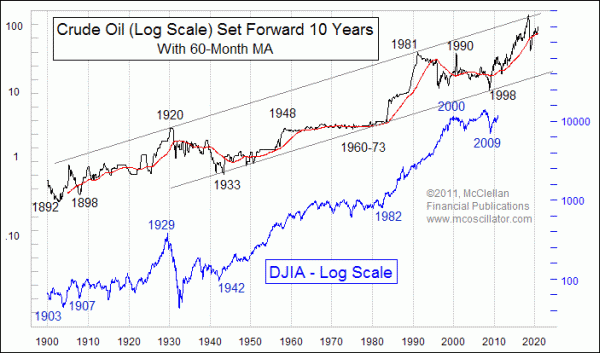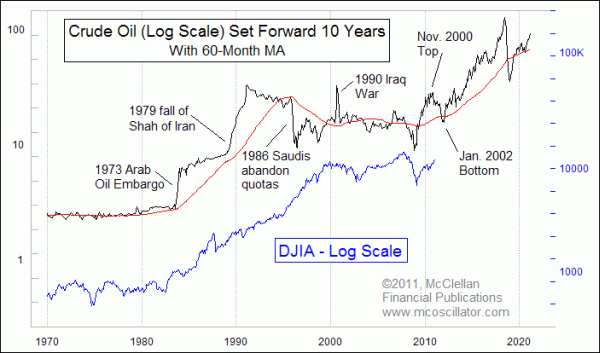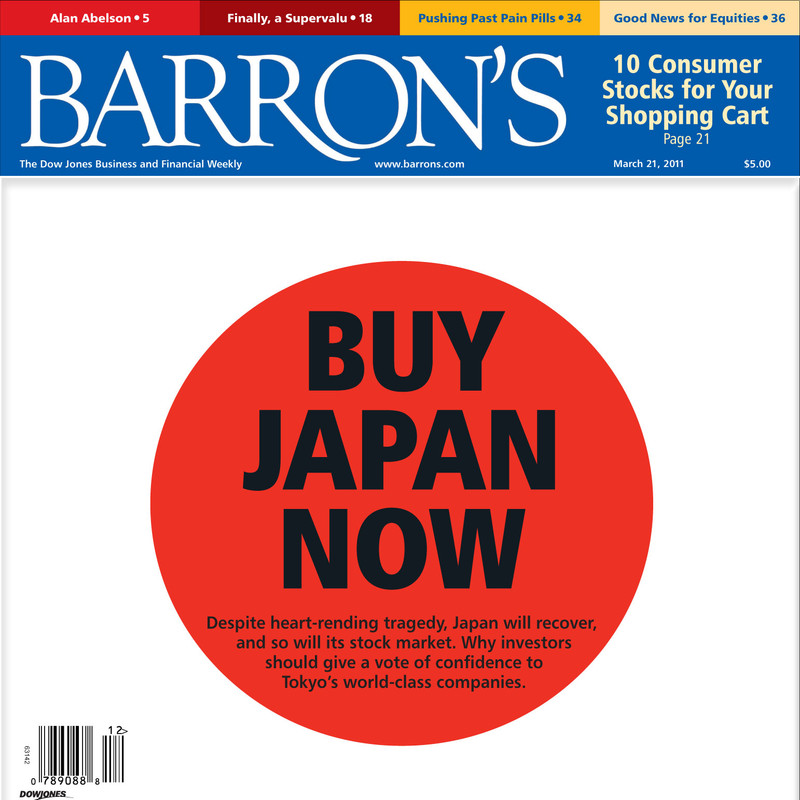
March 25, 2011
Just over a year ago, I looked at the 10-year leading indication that crude oil prices give for the stock market. It is time to take another look at that relationship, especially in light of the trouble that it suggests is coming for stock prices.
This week’s chart shows again how the price plot of crude oil prices has done a great job of giving us a macro view of what the trend should be 10 years later for the stock market. The periods when crude oil prices have moved sideways led to sideways periods for the stock market a decade later. And the periods when crude oil has trended upward were followed 10 years later by big bull markets in the stock market.
So the fact that crude oil prices have gone from a low of $11/barrel in 1998 to now above $100 is an indication that we should expect a persistent uptrend for stock prices in the decade ahead. But we should not expect it to be an unbroken uptrend.
When we zoom in closer, we see that oil’s price fluctuations can have important meaning for stock prices about 10 years later. The timing is not perfect, but the dance steps generally get repeated.

The one caveat to that principle is that oil price movements that are based on supply and demand forces tend to matter much more than oil price movements brought about by governmental or quasi-governmental forces. The Arab Oil Embargo in 1973 got the big oil price rise started, but stocks did not match the magnitude of that rise or the additional up leg caused by the Iranian revolution in 1979. And the oil price crash of 1986 that came about when Saudi Arabia abandoned the production quotas similarly did not bring stock prices down.
The 1990 Iraq invasion of Kuwait caused oil prices to briefly double, but we did not see an exact echo of that spike in the stock market. When governments put a thumb on the scale and nudge oil prices away from where supply and demand factors would dictate, it does not show up as much 10 years later in the stock market.
Still, the background price pattern movements can clearly be seen as having been repeated in stock prices roughly 10 years afterward. And now we are into the 10-year echo point of the big oil price decline from Nov. 2000 to January 2002. So far, the Fed’s POMOs have kept the stock market going higher, so we have not yet seen the echo of that oil price decline being manifested in stock prices. But given the decades of correlation between stock prices and oil’s leading indication, it is hard to imagine that we will be exempted from seeing some kind of echo of that oil price drop. When the Fed stops doing POMOs in June, and when the stock market enters the part of the year when seasonality is much weaker, stock prices should finally be allowed to manifest an echo of that 2000-02 oil price decline.
The good news for long term investors is that later this decade we should see stocks echo the big rise in oil prices. The bad news is that the most likely way for this to happen is not from stocks being worth more, but rather that the dollars needed to buy stocks will be worth a lot less thanks to the Fed inflating the monetary base. So yes, in the late 2010s, your shares of stock will be worth more dollars. But those dollars won’t be worth as much.





